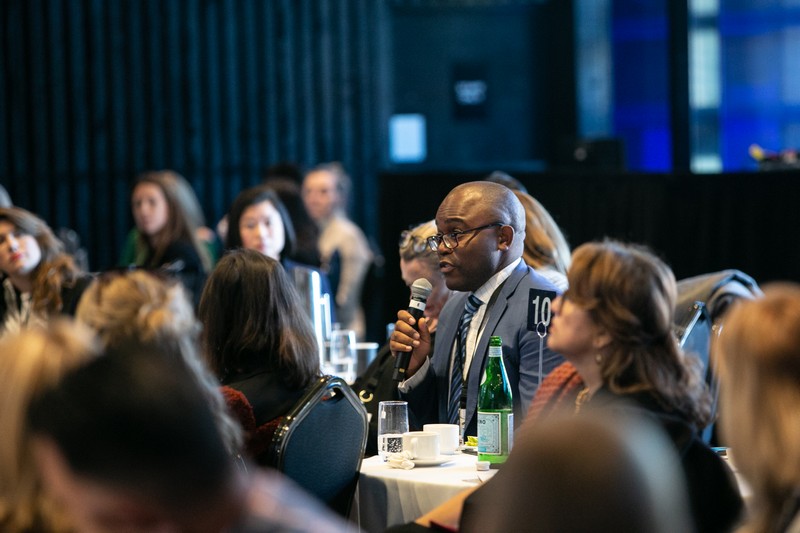Achieving gender parity in an organisation’s teams and leadership is a vital first step towards supporting gender equity, but it’s very difficult to achieve in the short term, especially in male-dominated industries such as financial services.
In this article I want to share 5 steps that organisations can take to begin the journey towards not only gender equity, but also viewing a market through a gender lens.
This is important because it’s becoming increasingly clear that some leaders are hesitant to engage with ANY aspects of progressive gender policies or projects until they feel that they have resolved that most visible of issues, which is gender parity in leadership and teams.
With sensitive and emotionally charged issues such as gender or racial equity, dipping one’s toes in without getting your house in order is viewed as too risky. A clear example of that was demonstrated at the recent Gender Lens Investing Summit in Sydney where all but handful of attendees and presenters were women.
However, in the short term, there are certain things that organisational leaders can implement, which do not carry significant financial or organisational capacity costs to implement, which have strong contribution to gender equity, not only within the organisation but also in the broader market.
Here’s 5 key steps to consider:
1. Reflection
It’s a useful first step to reflect on what an organisation is doing that could be supporting or hindering gender equity within the organisation or in the broader market.
‘Reflective’ questions could include: Is our recruitment process inclusive? Are we engaging with stakeholders about this critical issue? Who can we learn from?
Sometimes such reflection can be more authentic if facilitated by an independent third party, but it does not have to be. Internal acknowledgement, that this is important enough to warrant thinking through, may be enough to facilitate genuine reflection.
2. Intentional Listening
Creating avenues to get honest feedback from your female employees, clients, and other stakeholders about their experience within the organisation, and its product offering, is another important step.
How exactly this feedback is provided may change from organisation to organisation, to protect the parties involved, but the constant should be a clear message that this is important and that this is a safe-space; it must be made clear that those providing feedback won’t receive negative blowback.
Insights from such intentional listening can be incredibly useful in understanding the low hanging fruits, and separating this from the longer-term issues. Also, it’s important that intentional listening is a first step towards concrete action, rather than being the action itself
3. The Journey Approach
Gender equity is always going to be a journey, rather than a near term destination, for most organisations in the financial services sector. Acknowledging that an organisation is on that journey, and being authentic about where the organisation is on that journey, will make an enormous difference.
It will send a signal to employees that this is important and may encourage other organisations to seek to understand their own progress. Taking this journey approach removes the tendency of waiting to engage until the organisation perfectly ticks all the boxes around gender issues.
At Brightlight Group, we have been transparent about the fact that, while we have made progress in increasing the participation of women throughout our organisation, we are very much near the start of that journey.
Our engagement with organisations like the Criterion Institute and Australian Department of Foreign Affairs and Trade’s Frontier Brokers, as well as participating in events such Gender Smart Summit and Gender Lens Investing Summit, has provided us with impetus to accelerate our progress on this journey
4. Supporting Young Female Professionals
For most male dominated industries there is compelling evidence to suggest that while male and female participation is similar at university and start of career, female participation in the field tends to drop off mid-career.
This suggests there are structural barriers. Targeted support for female professionals within organisations, and in the broader market, will go a long way in bringing down some of these barriers. Such support may include mentoring young female professionals, and supporting organisations that do so. The more female professionals that stay and thrive in the industry, the easier and faster it is to achieve gender parity and equity
5. Being Aware of Power Dynamics
It’s important for a business to have clear and robust processes that provide stakeholders with confidence of their ability to execute. However, if those processes were historically conceived, confirmed and refined in a male dominated environment, they are likely to have blind spots around gender power dynamics inherit in the processes. And they may carry with them unintentional barriers to full participation, for both male and female stakeholders.
Just being aware of the potential existence of such blind spots empowers organisations to question and rethink their processes, and to identify where tweaks can be made. Often, those tweaks can take little effort to implement. For example, in the funds management context, opportunities to invest typically come from a broad network that is often built over the course of many years. Simply revising that network, and ensuring there is both good female representation and that there are no unintentional barriers for women to be part of that network, is an easy step that can have a big impact.
Simba is Head of Investment Solutions at Brightlight Group. He leads Brightlight’s work in designing and managing impact investment portfolios with and on behalf of institutional investors, government entities and non-profit organisations, foundations and family offices that are looking to allocate capital in line with UN Sustainable Development Goals with the goal of transforming lives.

